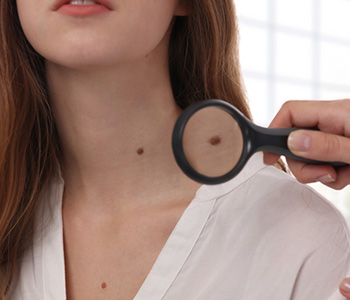Algonquin, IL area dermatologist explains common symptoms of skin cancer in patients
Posted by Dr. Vikram Khanna
What is skin cancer?
First of all, it is essential that patients fully understand what skin cancer is. Skin cancer is one of the easiest cancers to diagnose early on because it develops on the skin where it can be seen by an experienced healthcare professional. In some cases, skin cancer cells may develop in areas where a wound has not completely healed, or even on a mole that has been present for many years.There are different types of skin cancer, so knowing what to look for with each type is key. The most aggressive and deadly type of skin cancer is melanoma. Melanoma is often associated with lesions or moles on the skin, and may cause moles to change in shape, color, and size. In fact, a changing mole is the most common symptom or sign of skin cancer. If patients notice any of these changes with a mole that has been present on the skin for years, it may be indicative of melanoma. This is the point at which patients need to make an appointment with their dermatologist for an assessment of the mole, and if it is found to be cancerous, full removal of the mole and a small area of the surrounding skin. The other two most frequently diagnosed forms of skin cancer are squamous cell carcinoma and basal cell carcinoma.
Common symptoms of skin cancer
If you are being screened for cancer, our dermatologist may look for the following concerns:- New or growing skin tags and growths
- Changes to existing moles on the skin
- Wounds that will not heal or change in size
If there is any area of concern, Dr. Vikram Khanna may request a biopsy. This is a relatively quick procedure where the doctor will remove a small portion of a mole or skin growth and then send it to a laboratory for an evaluation. Depending on the type of cancer that Dr. Khanna suspects, he may remove the full mole at the time of the biopsy for accurate diagnosis and staging. The laboratory will then look for skin cancer cells in the tissue and depending on the type of biopsy that was performed, they will also evaluate how deep the cells have grown into your skin. After the biopsy is complete, the patient will be contacted by the dermatologist to discuss their diagnosis and treatment plan, as well as any questions the patient has.
What treatments are available for skin cancer?
 There are several different ways in which areas of cancer may be treated, including:
There are several different ways in which areas of cancer may be treated, including:
- Simple excision
- Mohs micrographic surgery
- Radiation
- Chemotherapy





















